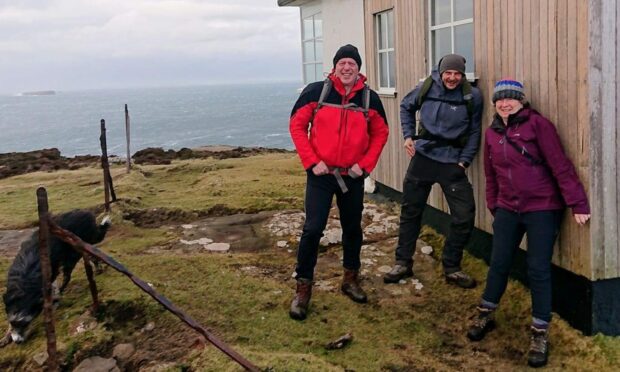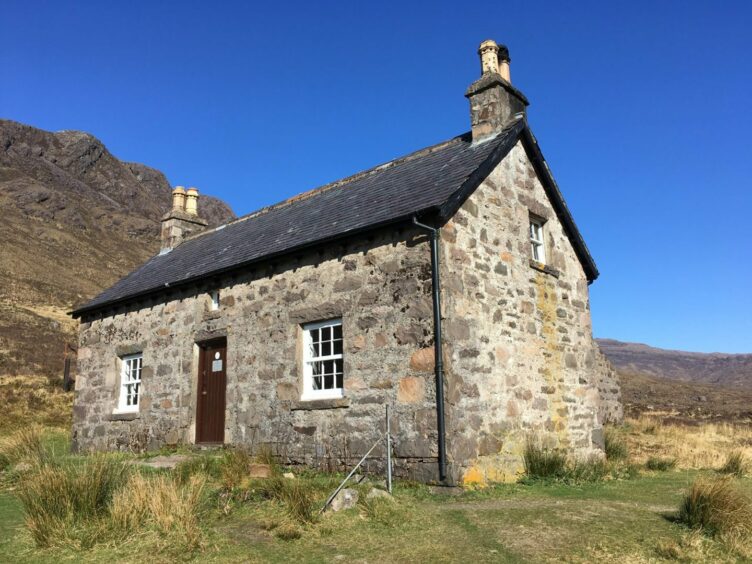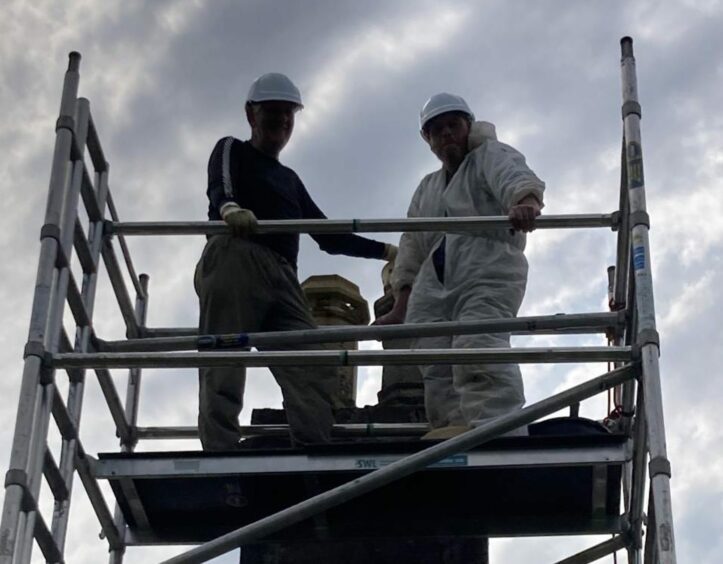A volunteer who travels 400 miles from Yorkshire to maintain a mountain bothy has described the “lovely” way they bring people together.
Hillwalkers, motorcyclists, kayakers and even picnickers are just some of the people who use Scotland’s 84 bothies each year.
These shelters, which can prove essential if the weather turns, are maintained by the Mountain Bothies Association.
Ian Furlong is one of an “interesting and eclectic bunch” of volunteers from the group – regularly making the eight-hour trip from Yorkshire to the north-west Highlands to check on it and carry out works.
Mr Furlong is maintenance organiser for Coire Fionnaraich bothy – a 19th century stalkers cottage.
He took up the role after retiring early and taking advantage of bothies himself.
“I had sat behind a desk and put a bit of weight on so I thought ‘right, I’m going to backpack around the country for 12 months’,” he said.
“I did, predominantly across Scotland, and I used the bothies a lot. At the end of that I thought ‘these are great’ and I wanted to give something back.”
£45,000 for 2023 work
The MBA looks after 84 bothies in Scotland but only owns two – the other 82 belong to land and estate owners.
As a maintenance organiser, Mr Furlong visits his bothy at least twice per year to give it a tidy, assess its condition and decide whether there is any work needing to be done.
He also holds the role of area organiser for the North West Highlands, meeting with all maintenance organisers and deciding what work needs done in the region’s bothies as a whole.
“If there are little jobs anyone could do we just ask them to get on with it, but one of the main things they do is to feed back about more major work that needs to be done,” said Mr Furlong.
“We’ll then arrange a work party with the necessary skills.”
At the most recent meeting in September it was decided MBA work parties will attempt to carry out around £45,000 worth of improvements in the region next year.
Hard at work
This £45,000 will go towards everything from fixing chimney leaks at bothies to paying for helicopters to fly larger equipment out to remote locations.
Work parties are mostly made up of MBA members who will submit a list of their relevant skills when they first join.
One of the more difficult work parties Mr Furlong has been involved in was replacing the roof of a bothy in a remote location in Skye after it was blown off in last year’s storms.
Mr Furlong makes sure it’s not all hard work though, with work parties also an opportunity for people with similar interests to come together.
He said: “My job is to make sure that logistically everything happens, but also that they have a good time, they are safe, and that they go away well fed thinking they’d like to do it again.”
He added: “It’s lovely really, I’ve got photos from last year of someone taking in the parts of a door on the back of their rucksack then putting it together, that’s right at the simple end of things.”
No one type of bothy user
Like the MBA’s work parties, bothies themselves bring together people who love the outdoors.
“There’s no one type of bothy user,” said Mr Furlong.
“It ranges from the individual who goes to the bothy just for the purpose of going to the bothy at one end, to the Munroists, hikers, kayakers, mountain bikers or people just stopping for lunch at the other end.”
He believes their use has grown in recent years as people opt for staycations as well as they become more visible on social media.
There is a balance to be struck though, as overcrowding in bothies is less than desirable.
Mr Furlong said: “If I go to a bothy and I’m the only person there I think ‘oh that’s a result’, but of course it’s a bit of a lottery. Some of the popular ones you might go there and there could be 20 to 30 people there.
“As long as you’re prepared to acknowledge that you can have some excellent nights with people you’ve never met before and you’ll never meet again.”
The bothy code
Bothies are for everyone to use, whether alone or in groups of under six, but everyone is asked to abide by the bothy code.
In broad terms, the code requires people to respect other users, the bothy, the surroundings, the estate and the restriction on numbers.
Neil Stewart, publicity coordinator at the MBA, gave advice to anyone hoping to use one of the bothies the MBA maintains.
“You should be familiar with using a map and compass because many of the bothies are in trackless terrain,” he said.
“If you are going to a bothy you should treat it as if you are going camping without a tent, though in some of the most popular bothies we do advise people to bring a tent because you can only cram so many people into one room.
“Take everything you would take if you were going camping; sleeping bag, mat, food, utensils, that sort of thing.”
The MNA is a charity relying on membership fees and donations to fund its work maintaining bothies around the country.
You can find out more about getting involved and becoming a member on the MBA website.






Conversation